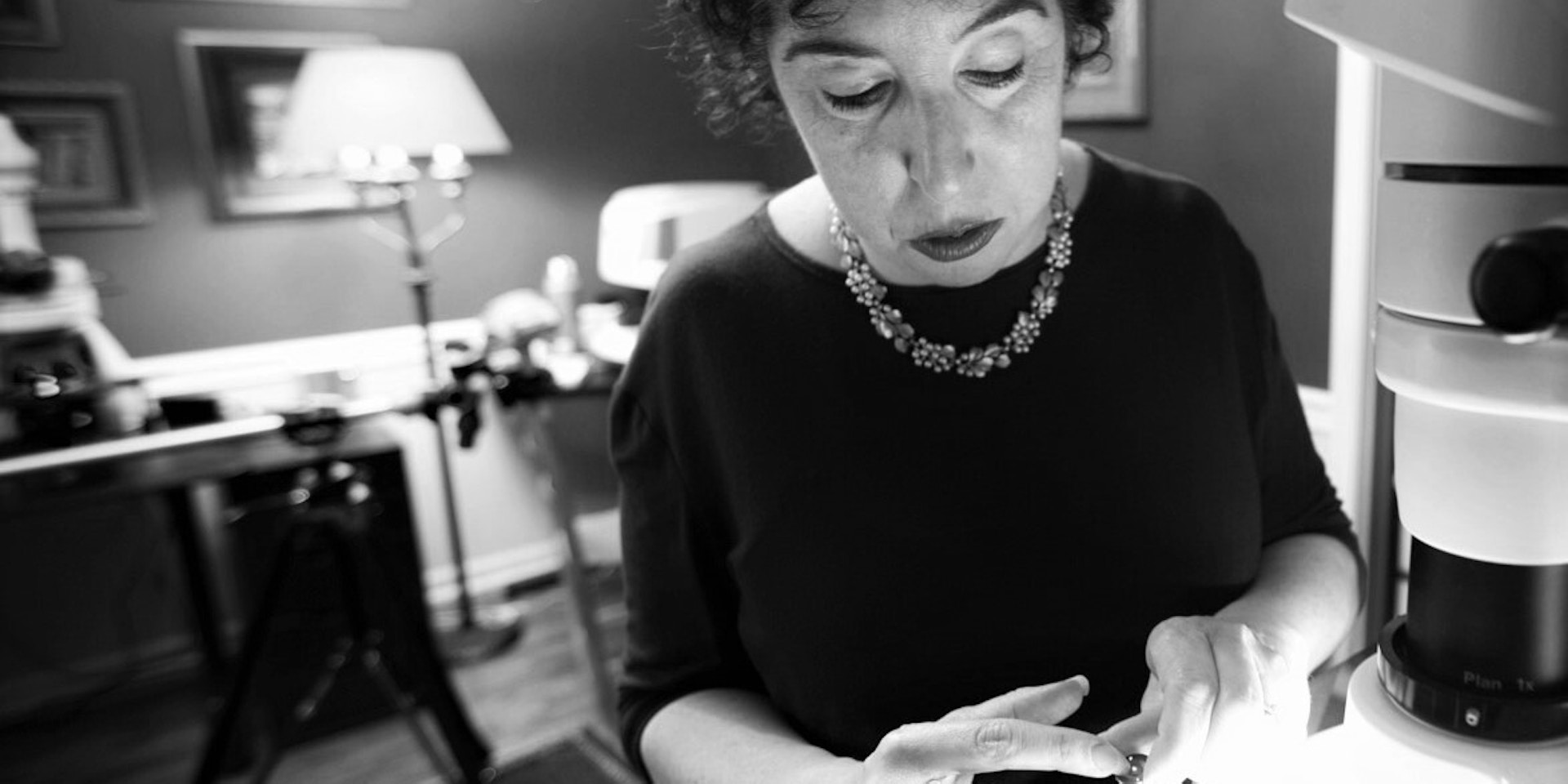
Interview with Jennifer Mass
Narrowing the Gap: Science and the Art Market
- By Thomas Marks, Editor, Apollo Magazine
- Meet the Experts
How much scientific analysis is possible in the time available for vetting at TEFAF New York?
We analyse dozens of objects at the fair. The connoisseurs often identify the objects first, and they may raise a hand and say that something looks questionable—and then we’ll come over with our ultraviolet light, infrared camera, or our x-ray fluorescence spectrometer. Sometimes we’re able to confirm a suspicion that they have; at other times, we reassure them and everyone can move forward happily.
So it’s a collaborative process?
Very much so. The best information you can get about an artwork is through a discussion between the connoisseur, the conservator, and the scientist. Together, they can really make a judgement about an object… Are these the right materials for the period? Is the construction right? Does the work have the stylistic features we would expect?
The scientists who work on the vetting team all have their own specialisms, too. Our areas of expertise include Impressionist through Expressionist paintings, Central European porcelain, Renaissance bronzes, Greek and Roman antiquities, and 17th-century Dutch paintings—and we’ll take a close look at those on our own.
What types of test does the scientific vetting committee carry out?
So far, we’ve been focusing on looking at the condition and attribution of the objects, usually with microscopy and ultraviolet light illumination, and we’ll do elemental analysis to work out the extent of prior restorations. This spring, we’re going to be introducing molecular analysis as well, which will be particularly helpful for vetting contemporary art.
With contemporary works, we’re interested in their state of preservation—in degradation products that might be forming, for example—and in the materials used to manufacture them. So, for instance, some synthetic polymers that are used in plastics are quite durable and stable, and others are extremely light-sensitive. We feel that collectors should know about the inherent vice of objects—works that are made from materials that were never meant to last.
“The best information you can get about an artwork is through a discussion between the connoisseur, the conservator and the scientist.” — Jennifer Mass
How has the scientific analysis of works of art developed in recent years?
It’s a tremendously exciting time. A number of foundations and funding bodies, such as the Samuel Kress Foundation, have really focused on getting more research published in technical art history—and on getting it into the classroom for the next generation of art historians. We’re trying to democratise this field, that so that art historians will know enough science to collaborate effectively with their peers in conservation, as well as the chemists and physicists who work in museum laboratories.
At the same time, there’s been an absolute revolution in terms of the development of non-invasive and non-destructive techniques for the study of works of art. Take x-ray fluorescence intensity mapping, which is essentially taking a photograph of a painting using x-rays so that we can look at its elemental composition. From that false colour x-ray image, we can immediately detect areas of prior restoration and identify all the pigments that were used to create the work. Sometimes, we get information about canvas re-use, which is common in works by Modigliani and Picasso. Just this one non-invasive technique can generate a tremendous amount of information without us even taking a micro-sample.
Does the art market need to become more knowledgeable about the scope of the scientific tests now available?
I think that there is a bit of a knowledge gap. As much as we try to get the word out about the technologies that are available and how accessible they are, it has been somewhat slow. We are available throughout the fair to discuss our work with TEFAF dealers and collectors.
What questions should collectors be asking about condition that can be answered through scientific analysis?
Collectors should definitely ask for a condition report on any object that they’re thinking about purchasing. As is often said, restoration has been done to works of art for as long as artists have been making them—but it’s only since 1970 or so that people have started rigorously documenting the changes that they’ve made in the name of preservation. Even with a condition report, a collector should probably go further and have, at the minimum, ultraviolet illumination and x-ray fluorescence spectroscopy done (or in the case of contemporary art, infrared spectroscopy), to make sure that they fully understand the condition of work that they’re purchasing.
"Collectors can make a tremendous contribution to technical art history by having their collections analyzed and added to the literature for future generations of art historians." — Jennifer Mass
Is the data collected about artworks sufficiently accessible?
It really is important to have information out there, so that artists and their techniques can be better understood. My analysis of several Modiglianis in the Barnes Foundation was recently published in The Burlington Magazine—and I think that will help resolve misconceptions about that artist’s working methods and his palette. On the other hand, thinking of forgeries, we do have to be careful about how much technical information we put out there. We don’t want to create a roadmap for more sophisticated forgeries.
How do you envisage your field developing over the coming decade?
I hope that we’re able to get the message out there to collectors and dealers that, as scientific techniques have become more and more sophisticated, they will also become more portable and accessible. This will be valuable for them, not only in terms of the stewardship of collections from a conservation perspective, but also in terms of publication. In my work at TEFAF, I’ve met a number of collectors whose collections I would dearly love to see published. Collectors can make a tremendous contribution to technical art history by having their collections analyzed and added to the literature for future generations of art historians.


